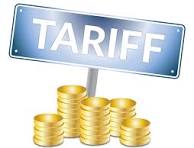Reports indicate that former U.S. President Donald Trump may soon announce an increase in tariffs on goods imported from India. This decision raises concerns about the Potential Economic Impact of a U.S. Tariff Hike on Indian Imports, which could be significant, with wide-ranging implications for both economies, and ripple effects on trade, investment, and growth. Exploring the potential economic impact of a U.S. tariff hike on Indian imports reveals vulnerabilities in both economies.
- Impact on Indian Exports
A tariff hike would directly raise the cost of Indian goods in the U.S. market. This would make them less competitive. Key sectors such as textiles, engineering goods, pharmaceuticals, and information technology hardware could face reduced demand. While services like IT outsourcing may not be directly impacted by goods tariffs, any deterioration in bilateral trade relations could spill over. This may affect service-sector negotiations, highlighting the Potential Economic Impact of a U.S. Tariff Hike on Indian Imports. - Effect on the Indian Economy
Trade Balance Pressure: A decline in U.S. orders could hurt India’s export earnings. Subsequently, it could widen the trade deficit, further illustrating the Potential Economic Impact of a U.S. Tariff Hike on Indian Imports.
Impact on Employment: Labor-intensive industries—particularly textiles, handicrafts, and certain manufacturing sectors—might see job losses if export orders drop, underscoring the potential economic impact of a U.S. tariff hike on Indian imports.
US tariff in import from India goods
Supply Chain Adjustments: Exporters may have to explore alternative markets or absorb part of the tariff cost, squeezing profit margins.
- U.S. Domestic Impact
For U.S. businesses and consumers, higher tariffs on Indian goods would likely increase costs. While the intent of such measures is often protecting domestic industries, in reality, it can lead to inflationary pressures. It may also disrupt established supply chains, especially in industries where India is a major supplier. These inflationary pressures represent another dimension of the Potential Economic Impact of a U.S. Tariff Hike on Indian Imports. - Bilateral Relations & Negotiations
Historically, tariff disputes have triggered rounds of trade negotiations or retaliatory measures. India could respond with reciprocal tariffs on U.S. products. This could impact U.S. agricultural exports, energy supplies, or high-value goods entering the Indian market. Such actions align with global trade patterns where nations use tariffs both as economic tools and negotiation levers. - Long-Term Strategic Concerns
Investment Sentiment: Heightened trade tensions can reduce investor confidence, slowing cross-border investments.
Shift in Global Alliances: India may deepen trade engagements with other major partners. They could choose to engage more with the EU, ASEAN, and Australia to reduce dependency on the U.S. market.
Tax & Compliance Complexity: Businesses engaged in cross-border trade might face more complex transfer pricing challenges. Customs valuation and compliance burdens may also increase. This is outlined in ICAI’s discussions on international taxation principles.
Conclusion
While a tariff hike might serve short-term political or protective objectives in the U.S., it risks long-term economic inefficiencies for both nations. For India, the challenge will be to adapt swiftly—diversifying export markets, enhancing domestic value addition, and engaging diplomatically to resolve trade frictions. For the U.S., careful consideration is required to avoid unintended inflationary effects. It is also essential to maintain robust strategic relations with one of the fastest-growing economies in the world.


